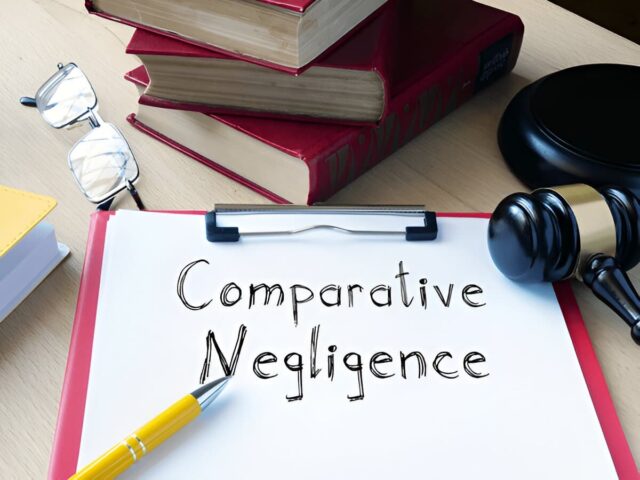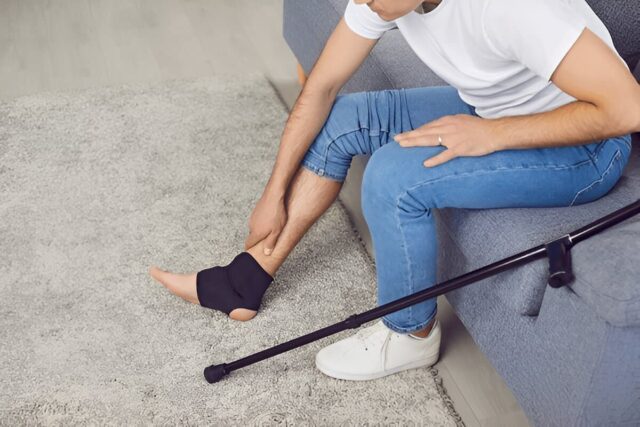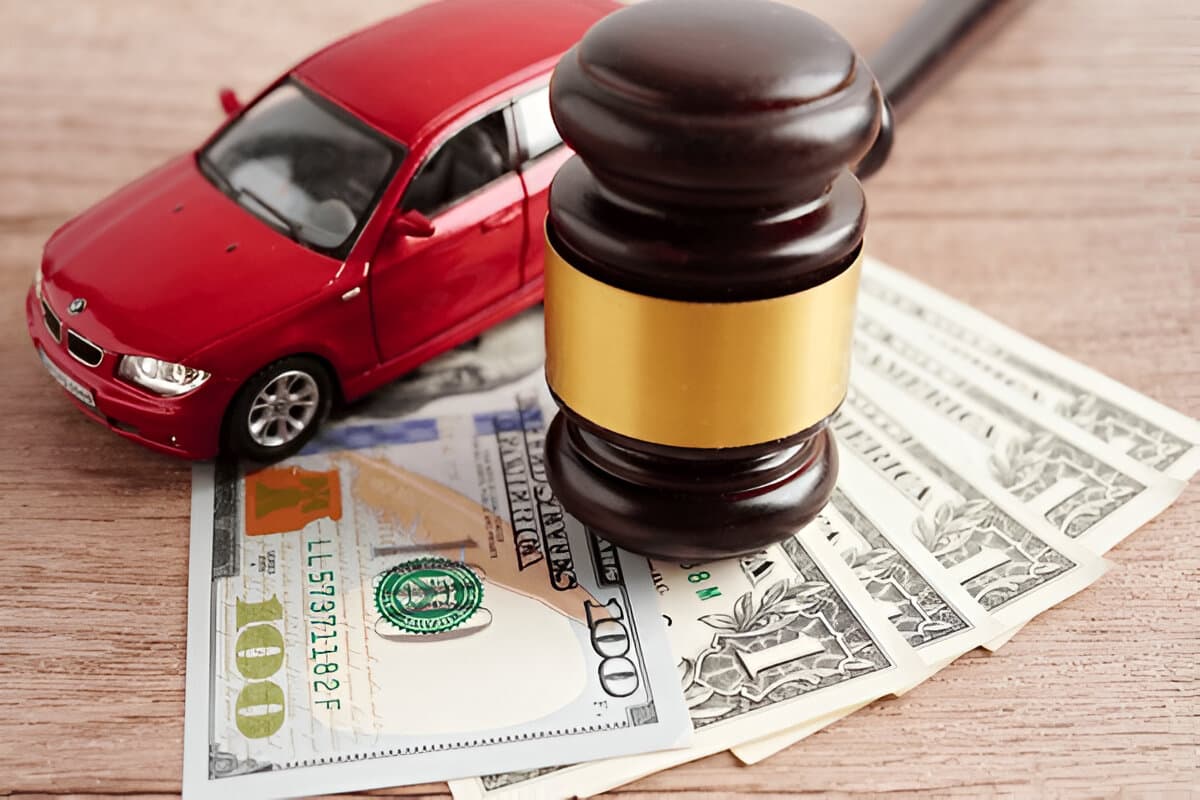When more than two cars are involved in a collision, the question of who pays for your injuries isn’t straightforward. The resolution depends almost entirely on identifying the precise sequence of impacts and untangling the actions—or inactions—of every driver involved in the moments before the crash.
Determining this chain of events is the most demanding part of the claims process. Insurance companies for each involved driver will conduct their own investigations. Their goal is clear: to minimize their own financial liability by shifting blame to other parties, and that can include you.
If a multi-car pileup has injured you or a loved one, the team of Arkansas car accident lawyers at Caddell Reynolds Law Firm is ready to help bring clarity to the confusion. We handle these complex cases and are ready to protect your rights. Call us for a free consultation at (479) 782-5297.
Who Pays My Medical Bills Right Now?
Your Own Insurance as the First Line of Defense
Your first source of coverage for medical costs usually comes from your own automobile insurance policy. Specifically, two types of optional coverage apply here: Personal Injury Protection (PIP) and Medical Payments (MedPay). In simple terms, these are “no-fault” benefits, meaning they pay for your initial medical treatment regardless of who caused the collision. Insurers in Arkansas are required to offer you these coverages, though you can reject them in writing.
This coverage provides a buffer. It allows you to seek and receive necessary medical care without having to wait weeks or months for the various insurance companies to fight over liability.
When Your PIP/MedPay Runs Out
These policies are not bottomless. They come with specific coverage limits, which may be as low as a few thousand dollars. In any case involving serious injuries, it is quite common for the cost of emergency services, hospital stays, and initial treatments to exceed these limits very quickly.
Once your own initial insurance coverage is exhausted, any further payment for your medical treatment hinges on identifying the at-fault driver and making a claim against their liability insurance.
Using Your Health Insurance
Your personal health insurance could also cover medical costs that go beyond your MedPay or PIP limits.
However, it’s important to understand how this works. If you later receive a settlement or jury award from an at-fault party, your health insurance provider will almost certainly demand to be paid back for the amounts it covered. This legal process is called subrogation. Our firm manages these subrogation claims and negotiations as part of our representation. We work to reduce the amount you are required to repay, maximizing the funds that ultimately stay in your pocket.
How is Fault Determined When Multiple Drivers are Involved?
It’s Not Always the First or Last Car
There are pervasive misconceptions about fault in these crashes. One is that the very last car in a chain-reaction pileup is automatically to blame. Another is that the first driver who braked suddenly must be the responsible one. The truth is far more nuanced.
Liability is not about being first or last; it’s about negligence. Any driver whose negligent actions—or failures to act—contributed to the chain of events can be held partially or even fully responsible for the outcome.
Introducing the Theory of Comparative Negligence
 To handle these situations, Arkansas operates under a legal rule called modified comparative negligence. In simple terms, this law acknowledges that fault for an accident can be shared among several people. An investigation does not just look for a single “at-fault” driver; it assigns a percentage of fault to every driver whose actions played a role. For example, a driver who merged without looking might be deemed 60% at fault, while another driver who was following too closely to react in time might be 40% at fault.
To handle these situations, Arkansas operates under a legal rule called modified comparative negligence. In simple terms, this law acknowledges that fault for an accident can be shared among several people. An investigation does not just look for a single “at-fault” driver; it assigns a percentage of fault to every driver whose actions played a role. For example, a driver who merged without looking might be deemed 60% at fault, while another driver who was following too closely to react in time might be 40% at fault.
Under this system, you can only recover financial compensation if your assigned percentage of fault is less than 50%. If an investigation finds that you were 50% or more responsible for the accident, you are legally barred from collecting any payment for your injuries from the other drivers. This makes the fight over even a single percentage point of fault incredibly significant.
Common Scenarios in Multi-Car Accidents
While every crash is unique, they frequently fall into a few recognizable patterns.
- The Chain Reaction: This is the classic “domino effect” pileup. Car A hits Car B from behind, pushing Car B into Car C, and so on. Liability typically starts with the driver of Car A, who initiated the sequence. However, drivers of the other vehicles could also be found partially at fault if, for example, they were following too closely to the car in front of them, leaving no room to stop safely.
- The “Sandwich” Accident: This occurs when you are stopped, perhaps in heavy traffic, and a car strikes you from behind. The force of that impact is so great that it pushes your vehicle forward and into the car in front of you. In this scenario, the driver who started the event by hitting you from behind is typically responsible for both your rear-end damage and the damage to the front of your car from the second impact.
- The Lane Change Pileup: This is triggered when a driver makes a sudden or unsafe lane change, cutting another vehicle off. This action forces the other driver to slam on their brakes or swerve, which in turn causes a cascade of collisions behind them as other drivers react. The driver who made the initial unsafe maneuver is usually the primary negligent party.
What Does It Take to Prove Who Was At Fault?
Proving liability in a complex multi-vehicle collision requires building a case supported by objective, verifiable evidence.
Our Investigation Begins Immediately
The evidence needed to piece together the truth of a multi-car pileup is fragile. Skid marks fade, witnesses’ memories blur, and vehicle data can be overwritten. We understand this urgency, which is why our work begins the moment you retain our firm. We take prompt and decisive steps to find and preserve the evidence before it disappears.
Gathering Key Evidence
We leave no stone unturned. This process includes:
- The Official Police Report: The police report is a valuable starting point. It contains basic information, vehicle positions, witness names, and sometimes a preliminary conclusion from the officer. However, these reports can contain factual errors or opinions that are not supported by the evidence. We use the report to guide our investigation, not as the final word.
- Eyewitness Statements: Independent witnesses who saw the crash unfold are incredibly powerful. Their accounts can confirm the sequence of impacts or identify a key action, like an unsafe lane change, that an involved driver might deny. We quickly contact these witnesses to secure their detailed statements while their memories are still fresh.
- Video Footage: In the modern world, video evidence is more common than ever. We immediately launch a search for any available footage, which might come from government traffic cameras, dash-cams inside the involved vehicles, or even security cameras on nearby businesses that happened to be pointed at the roadway.
- Physical Evidence: The vehicles themselves tell a story. We examine photographs of the crash scene in detail, analyzing the location and severity of the damage on each car. The type of damage—whether it’s a crush impact from the rear or a sideswipe—can help confirm how the collision happened. We also analyze evidence like skid marks and the final resting place of the vehicles.
Hiring Outside Professionals
In cases where the sequence of events is especially chaotic and disputed, a written report might not be enough. This is when we may bring in an accident reconstruction professional. These are highly trained individuals, sometimes with backgrounds in law enforcement or engineering, who scientifically reconstruct the crash.
They use principles of physics, engineering, and mathematics to analyze the physical evidence. Their work produces a detailed, scientific model of the collision, calculating vehicle speeds, angles of impact, and the precise order of events.
What Kinds of Damages Can I Recover?
Once we establish who is at fault for the pileup, the next step is to pursue the full compensation available under Arkansas law. The goal is to secure a financial recovery that addresses every loss you have suffered because of the accident. These losses, called “damages” in the legal system, are divided into two main categories.
Economic Damages: Repaying Your Financial Losses
This category covers all the measurable, out-of-pocket costs and financial losses that have resulted from your injuries. The purpose of economic damages is to make you financially whole again, as if the accident had never occurred.
These damages include:
- All Medical Bills: This is not limited to the bills you have already received. It includes everything from the ambulance ride and emergency room treatment to any future surgeries, physical therapy, rehabilitation, medication, and assistive devices you may need for your recovery.
- Lost Wages: This compensates you for the paychecks and income you lost while you were unable to work because of your injuries.
- Loss of Future Earning Capacity: If your injuries are permanent and prevent you from returning to your previous career or limit your ability to earn an income in the future, you can be compensated for this long-term financial loss.
- Property Damage: This covers the cost to repair or replace your vehicle and any other personal property that was damaged or destroyed in the crash.
Non-Economic Damages: Compensating for Human Loss
 This second category of damages is meant to compensate you for the intangible, personal, and profoundly human impact of the injury. These losses do not come with a simple invoice, but they are just as real and devastating as any financial cost. Calculating their value requires a deep understanding of how an injury has affected a person’s life.
This second category of damages is meant to compensate you for the intangible, personal, and profoundly human impact of the injury. These losses do not come with a simple invoice, but they are just as real and devastating as any financial cost. Calculating their value requires a deep understanding of how an injury has affected a person’s life.
These damages include:
- Pain and Suffering: This provides compensation for the physical pain, discomfort, and emotional distress you have endured because of the accident and your resulting injuries.
- Loss of Enjoyment of Life: If your injuries prevent you from participating in hobbies, activities, family routines, and other aspects of daily life that previously brought you joy and fulfillment, you can be compensated for this loss.
- Permanent Scarring or Disfigurement: This provides compensation for the physical reminders of the accident that may affect your appearance and self-esteem.
Common Questions About Multi-Car Accident Claims
The insurance company of one of the drivers has already called me and offered a settlement. Should I take it?
You should never accept a settlement offer without first speaking to an attorney. You need to understand the full, long-term extent of your injuries and all your financial losses. Initial settlement offers from insurance adjusters are almost always far too low. They are calculated to close your claim quickly and cheaply, and they do not account for future medical needs, your total lost income, or the full value of your pain and suffering. Once you sign their release, your claim is closed forever, even if your injuries turn out to be more serious than you first thought.
How long do I have to file a lawsuit in Arkansas?
The general statute of limitations for personal injury claims in Arkansas is three years from the date of the accident. If you fail to file a lawsuit within this period, you will lose your right to seek compensation. While that may sound like a long time, the process of investigating a complex multi-car crash, gathering evidence, and negotiating with multiple insurance carriers takes a considerable amount of time. It is always best to act much sooner.
What if the at-fault driver doesn’t have insurance or not enough?
This is a common and serious concern. If the responsible driver is uninsured or their liability coverage is too low to cover all your damages, your own policy can protect you. This is where your Uninsured/Underinsured Motorist (UM/UIM) coverage applies. This is a separate part of your own auto insurance that you purchase to protect yourself in this exact situation. Our firm will help you prepare and file a claim with your own insurance company under your UM/UIM benefits.
Let Us Untangle the Pileup and Track Down Every Penny of Compensation
You should not have to face multiple insurance companies and their teams of investigators and lawyers on your own. Our firm is here to manage the entire process for you—from preserving the fragile evidence at the outset to fighting for the full compensation the law allows for your injuries.
Let us handle the details so you can place your focus where it belongs: on your health and your recovery. For a free, no-obligation review of your case, call our Arkansas personal injury attorneys at Caddell Reynolds Law Firm today at (479) 782-5297.

